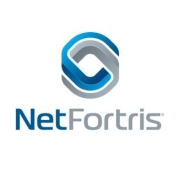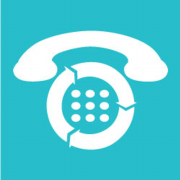IP PBX systems offer advanced communication capabilities by integrating traditional telephony with innovative IP technologies. Businesses benefit from streamlined operations and enhanced collaboration.
The top 5 IP PBX solutions are 3CX Live Chat, Cisco VoIP PBX, Yeastar S-Series VoIP PBX, Yeastar K2 and ShoreTel Premises IP PBX, as ranked by PeerSpot users in March 2025. 3CX Live Chat received the highest rating of 7.0 among the leaders, is the most popular solution in terms of searches by peers, and holds the largest mind share of 28.4%.
Providing robust communication solutions, IP PBX systems are essential for modern enterprises. These systems merge the functionalities of legacy PBX with IP technologies, delivering feature-rich telephony services. Users appreciate the flexibility, cost savings, and scalability that IP PBX platforms provide. Companies can manage internal and external communications more efficiently, leading to improved productivity and responsiveness.
What are the critical features of IP PBX?In the healthcare sector, IP PBX solutions are used to manage patient inquiries efficiently, streamline internal communication among staff, and maintain critical communications. Retail businesses leverage these systems to manage customer calls, order tracking, and provide support across multiple locations seamlessly.
Implementing an IP PBX system helps organizations improve communication infrastructure, enhance operational efficiency, and reduce costs. It provides a comprehensive solution to manage voice and data communications, meeting the dynamic needs of modern businesses.










These types of internet protocol-based calls can be placed and received using the internet by converting the analog voice signals to digital. To achieve this, IP PBX uses session initiation protocol (SIP), a communications protocol that initiates, manages, and ends voice sessions and is the staple for VoIP (voice over internet protocol) phone systems.
IP PBX uses a feature of SIP called trunking, which enables fast calls on multiple voice channels. It usually connects with a VoIP provider, which authenticates the SIP trunking accounts. Thus, users can reach internal or external phone lines through the SIP trunk.
A PBX (private branch exchange) is a somewhat legacy system, developed to reduce telecommunication costs by enabling companies to handle their phone system for internal communications, leaving the trunk line for outside calls. Most functionality is done by hardware; thus it is harder and expensive to scale up.
An IP (internet protocol) PBX goes a step further, enabling companies to route calls over the internet, which reduces the costs significantly, especially in the case of expensive calls, such as long-distance. Since it works over internet protocols, IP PBX can handle voice and data. Functionality is carried through software, which makes it easily scalable.
Although the terms IP (internet protocol) PBX and VoIP (voice over IP) are used interchangeably, there are some differences between them. VoIP adds the external capabilities to an IP PBX (private branch exchange) The VoIP gateway connects the PBX to the network so you can place and receive calls from analog phone lines. Installing a VoIP differs in some ways from installing an IP PBX
VoIP |
IP PBX |
|
Ease of use |
Easy |
Difficult |
Features |
Voice, external calls, video conferencing, supports mobile devices, encrypts calls |
Voice and external connectivity (PSTN - public switched telephone network) |
Maintenance |
No maintenance |
Operating system updates, software updates, configuration |
Reliability |
Redundancy, automatic call routing |
Single call path may result in function outages |
Scalability |
Unlimited |
Limited to PBX capabilities |
Remote work? |
Yes - desktop and mobile. |
No |
The main essential features of IP PBX systems include:
Other features offered by most IP PBX systems include:
Installing an IP Private Branch Exchange (PBX) system in your organization can have several benefits. If your company needs low-cost, reliable communications (and who doesn’t?), this may be the solution for you. Here’s a look into the main IP PBX benefits:
IP PBX may have drawbacks for some companies that are not equipped to use it. Here are some limitations to consider: